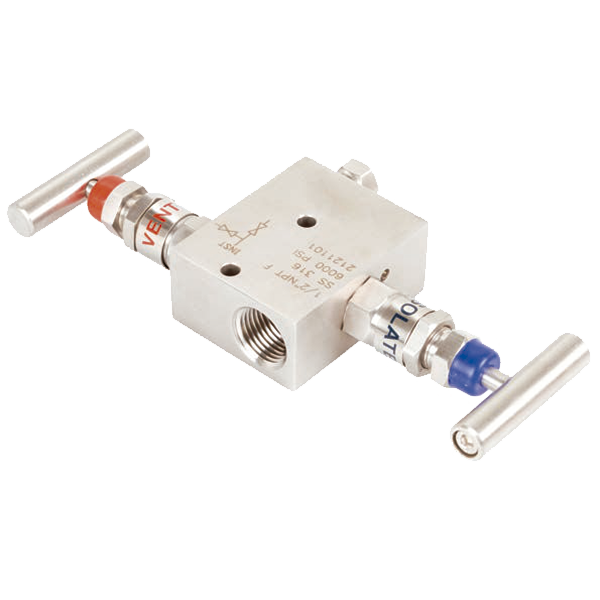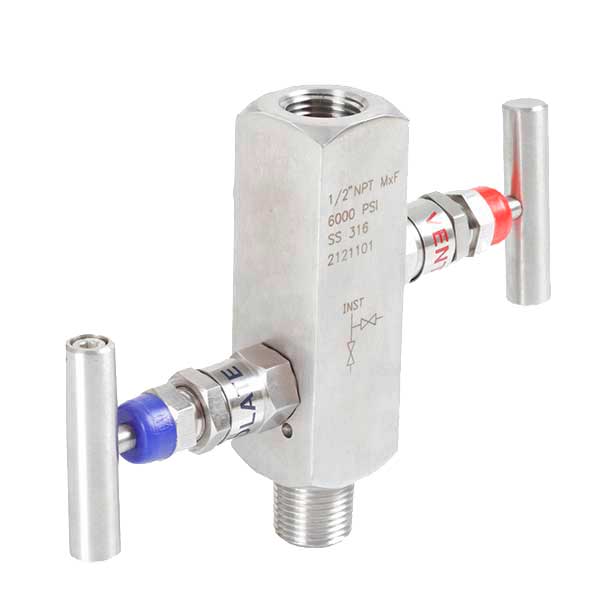What an instrumentation
manifold is?
An instrumentation manifold is a mechanism that unites in a single element installation lines used for protection, isolation, maintenance, venting / purging and calibration of industrial measuring instruments, mainly pressure.
By unifying 2, 3 or 5 valves in a single element, we avoid joint leaks and achieve the applications described in a very small and reliable space.
What an instrument manifold is used for?
Currently, an instrumentation manifold is a standard element or accessory in installations with transmitters or differential pressure instruments to control the fluids that affect this measurement device.
Using an instrumentation manifold we can:
How many types of instrumention
manifolds there are?
2 valves manifolds:
-Pressure switch calibration
5 valves manifolds:
3 valves manifolds:
The usual configuration for a 3-way manifold is 2 shut-off valves and a balancing valve.
At Zaes, as a manufacturer of hose fittings and a manufacturer of valves for viscous liquids, we manufacture a quality product thanks to our experience of more than 60 years.
¿Necesitamos un Manifold en nuestras instalaciones con Instrumentación de medida?
Instrumentation manifolds are very useful for different applications. From industrial machines to large industrial plants. By uniting different fluid lines in a system, instrumentation manifolds achieve more efficient results in terms of costs and energy consumption.
Benefits among which we can find, for example, the following:

